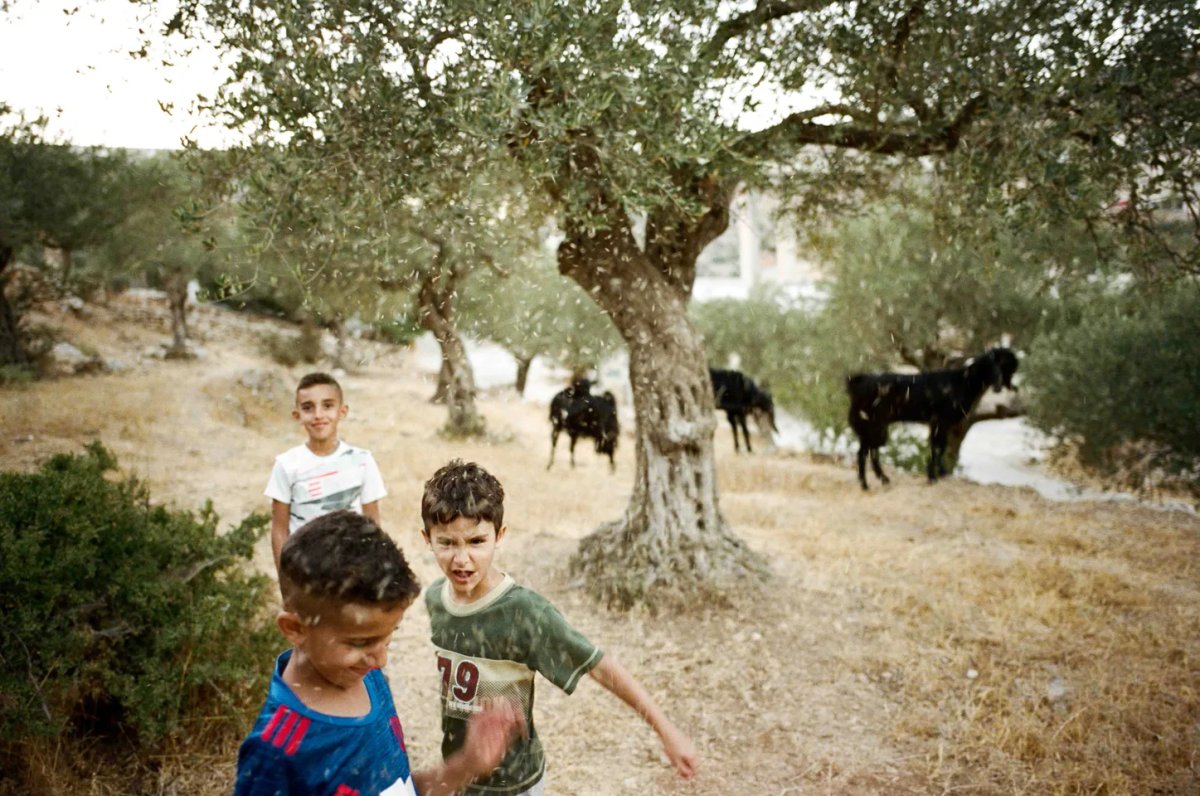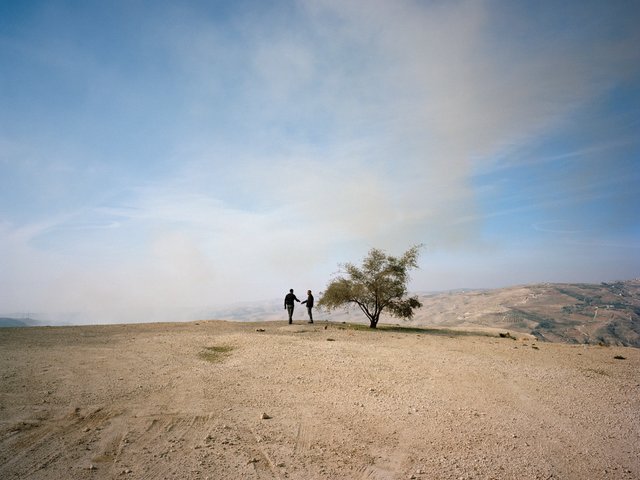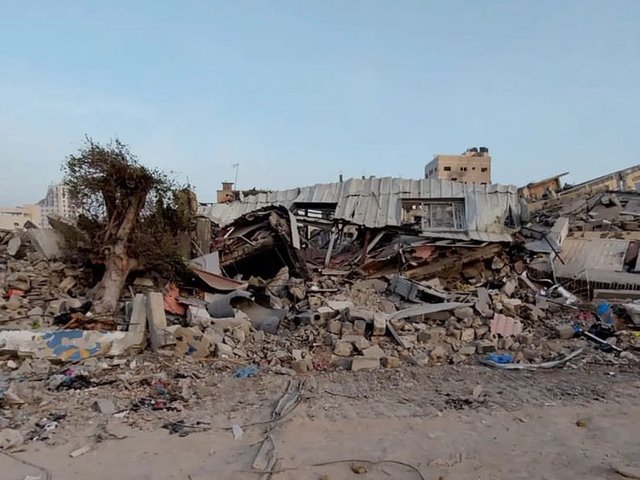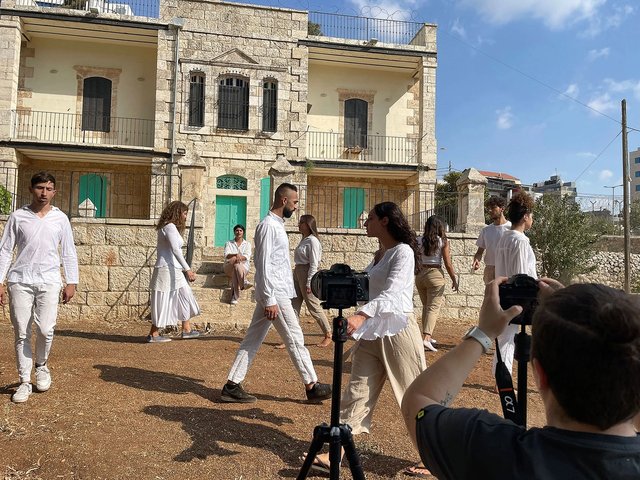Amidst a backdrop of war and devastation, one artist is hoping to challenge the narrow perceptions of Palestinian life and culture.
Adam Rouhana’s two solo shows in London offer a different view of the country, embracing everyday joys, the beauty of the land—as well as the struggles of living under occupation.
“I've been playing with this idea of fact and fiction, and about how, essentially, the images that we see become reality,” Rouhana tells The Art Newspaper. “I think the types of images that we see have an effect on society. So, for people to see these types of images [in the exhibitions], I think, changes people's perceptions of Palestine. I hope—I mean that's the idea.”
The Palestinian-American artist’s show, Before Freedom Pt. 2: The Revolution Cannot Be Built on Dreams Alone, opens at TJ Boulting this week for London Gallery Weekend (31 May-22 June), and follows the success of his debut exhibition, Before Freedom, which explored the same theme at Frieze No.9 Cork Street earlier this month (3-18 May).
Before Freedom, curated by the art journalist Amah-Rose Abrams, included rarely seen images of Palestinians going about their daily lives. The photographs, taken between 2022 and 2023, feature men enjoying a dip in the Ain al-Auja spring on a hot summer's day, a boy savouring a juicy watermelon and other cultural snapshots that celebrate food, the fertility of the soil and the labour that sustains it.
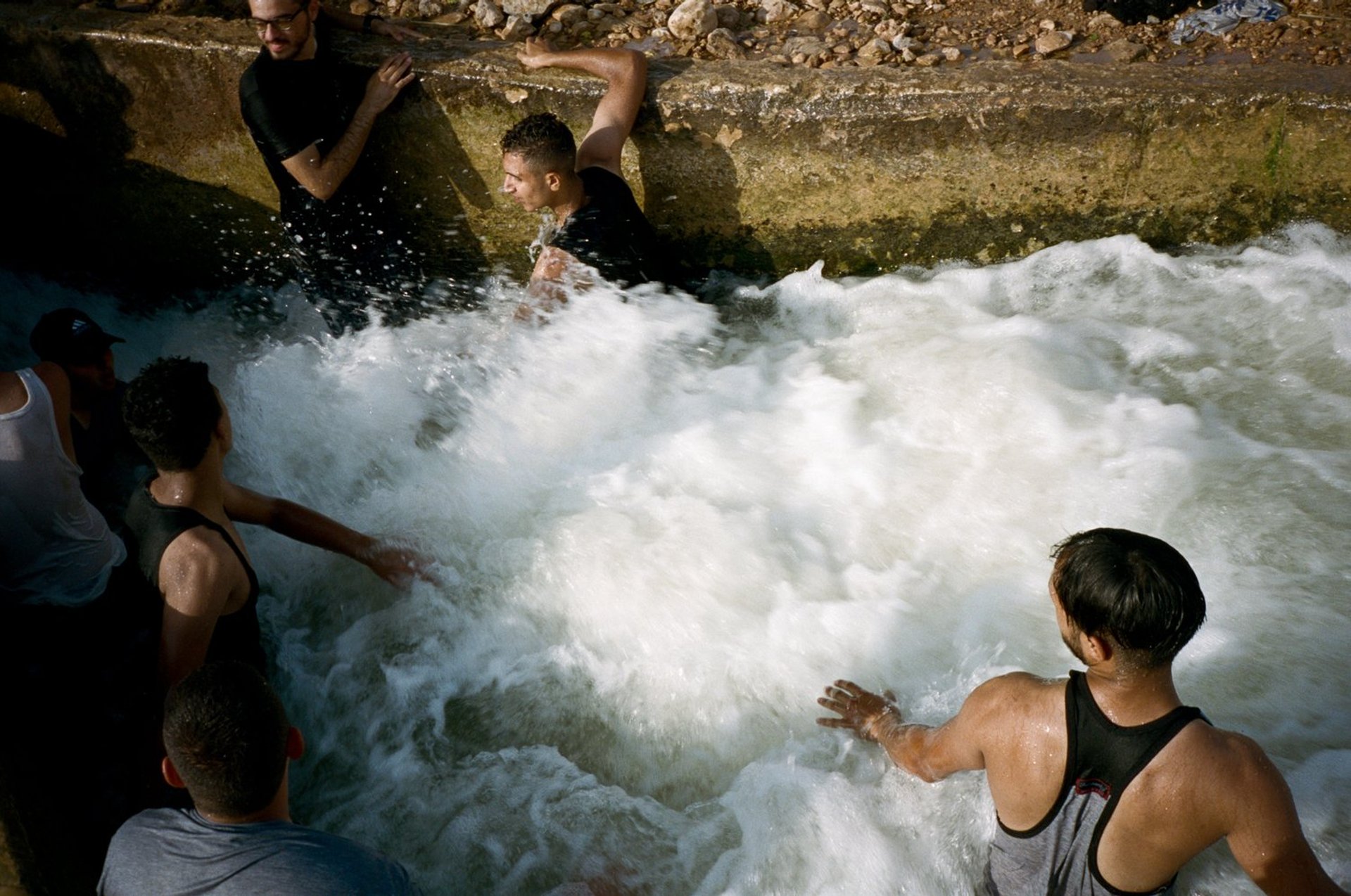
Adam Rouhana, Before Freedom (2022-23) Image: © Adam Rouhana
However, the conflict with Israel is a constant that even Rouhana’s lens cannot ignore. In a room adjacent to the main exhibition space at the Cork Street show, two works, placed side-by-side, allude to the crippling restrictions imposed on the movement of Palestinians. Obscured by a trail light, the images depict Palestinian workers on the move and Checkpoint 300, the barrier that links Bethlehem to Jerusalem. A photograph of a restless Arabian horse on an adjacent wall underscores the tension in the room.
Thousands of Palestinians a day queue at Checkpoint 300 for hours from around 4am to reach their jobs in Israel or East Jerusalem. “People are being treated like cattle pretty much. They're being subjected to this, even though many of them are actually from inside the borders of 1948 Palestine,” Rouhana says. “They don’t have lights outside in the morning, so it is dark. It’s really bizarre. It's a very violent architecture.”
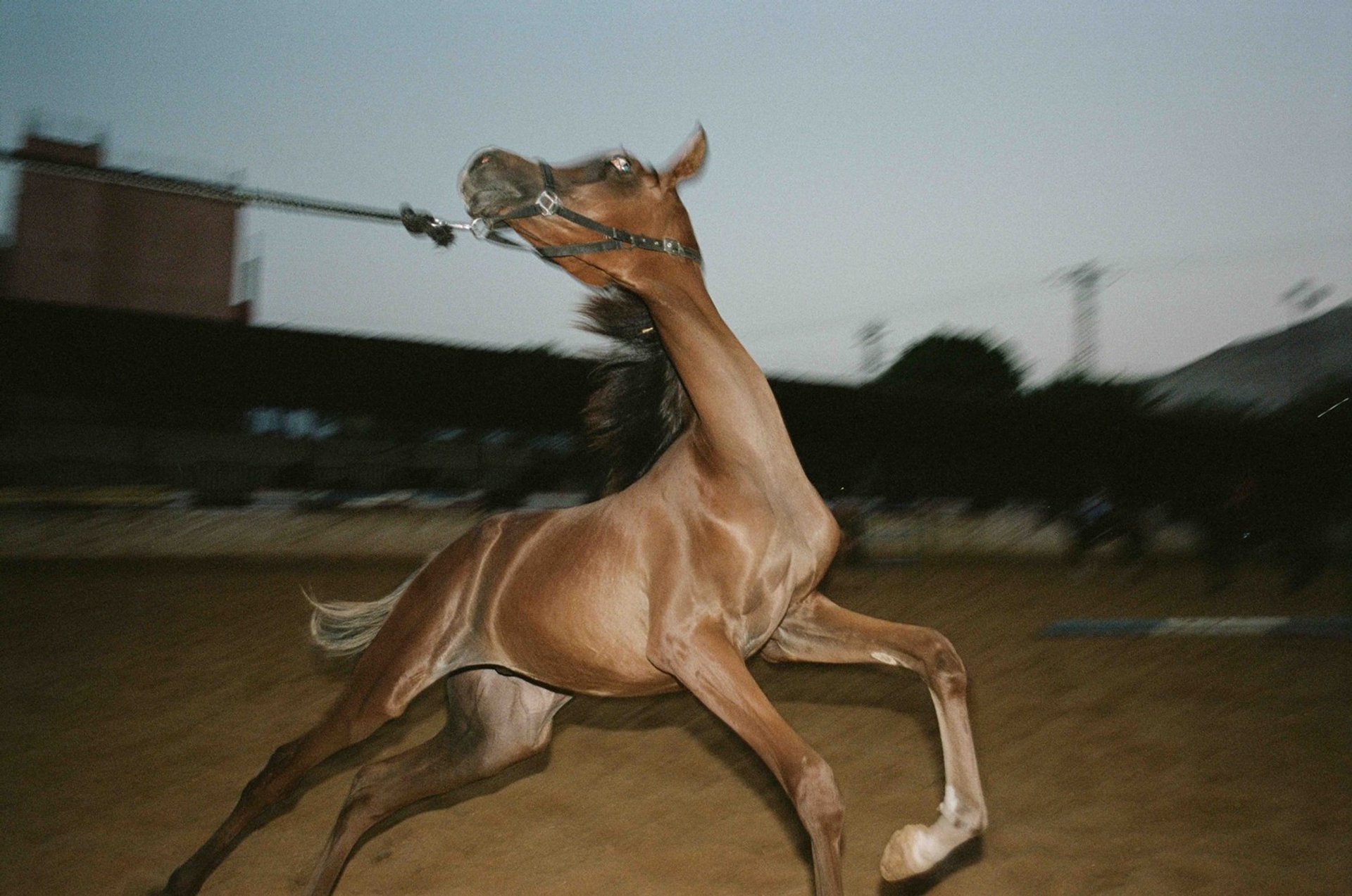
Adam Rouhana, Before Freedom (2022-23) Image: © Adam Rouhana
In August 2023 the United Nations Office for the Coordination of Humanitarian Affairs (OCHA) published a report identifying 645 “physical obstacles” in the West Bank and East Jerusalem, including checkpoints, roadblocks, earth-mounds and road gates, and earth walls, road barriers and trenches.
OCHA established that over half of these barriers severely impacted Palestinians and prevented or restricted their access to main roads, urban centres, services, and agricultural areas. Access to 20% of the West Bank is completely prohibited by Israeli military and is designated a “buffer zone”, the report stated.
After the Hamas terror attacks on Israel on 7 October 2023, in which around 1,200 people were killed and around 250 hostages were taken, Israeli restrictions in all Palestinian territories have intensified, with OCHA reporting 114 new closures erected.
Rouhana’s photograph of the checkpoint was taken in the afternoon, without the masses of people pressed against each other in inhumane conditions. It builds upon his desire to challenge the stereotypical images often associated with Palestinians, which he says have played a significant role in desensitising people to their plight and the violence they endure.
“To be subjected to checkpoints, as if we're all criminals is part of what it is to be Palestinian... but it's not everything,” Rouhana says. “Maybe because we've seen so much of it, it doesn't really evoke much [feeling] anymore. It's almost like through the photos, it becomes real. That occupation becomes actually permanent. I wanted to kind of undo some of that.”
The 33-year-old’s second exhibition, curated by Lobna Sana, features predominantly unseen works made between 2022 and 2024, including photographs from Rouhana’s residency this year at one of Bethlehem’s leading art hubs, Dar Yusuf Nasri Jacir for Art and Research, known as Dar Jacir.
His recent experience of the West Bank was different from his previous visits. Movement restrictions and checkpoint closures turned Rouhana’s ten-minute trips into hour-long journeys, which impacted his daily movements and the photographs he could take.
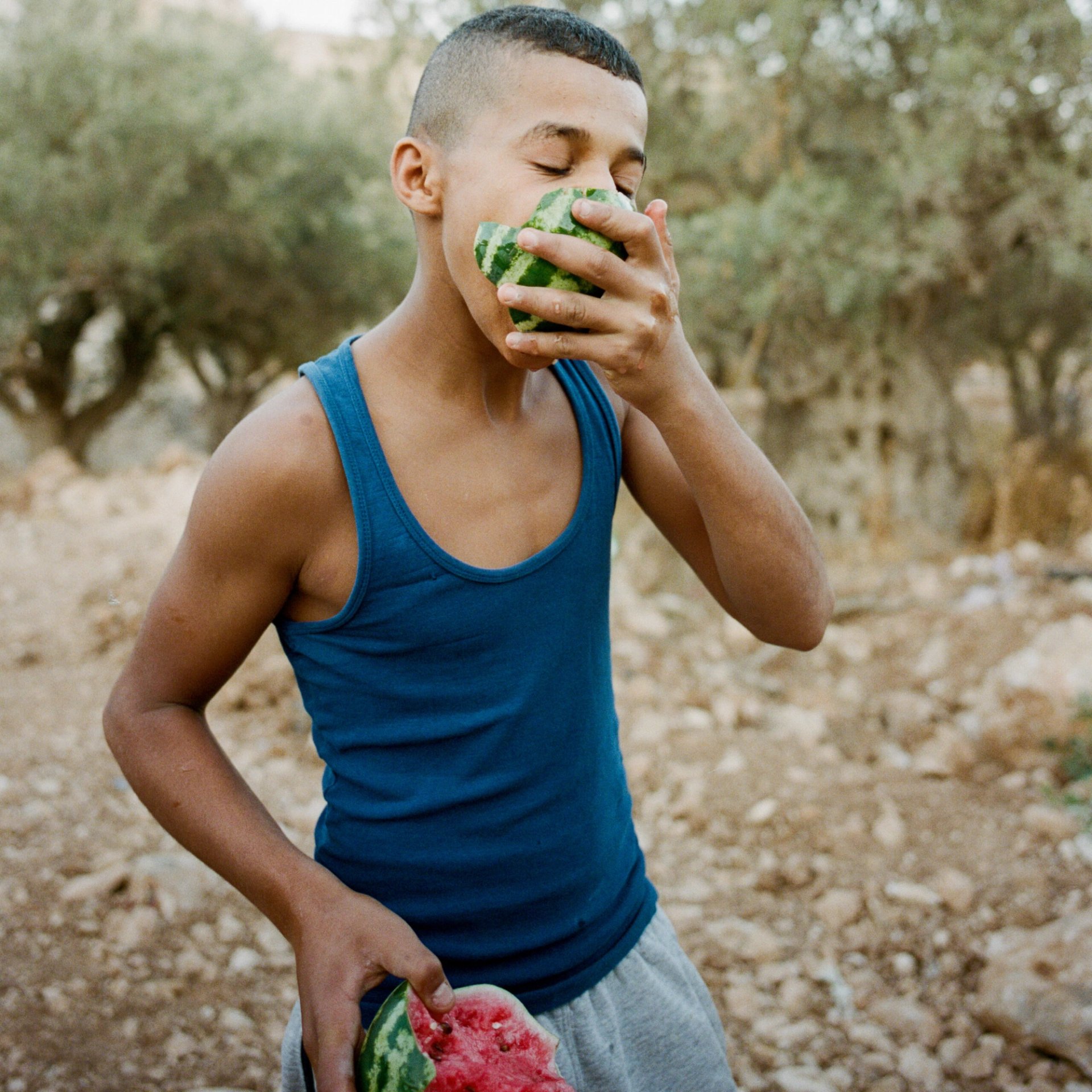
Adam Rouhana, Before Freedom (2022-23) Image: © Adam Rouhana
The ongoing war in Gaza, in which over 35,000 Palestinians have been killed, mainly women and children, also dominated his time in the West Bank. There has been an increase in violence in the region, with OCHA reporting that 480 Palestinians had been killed since 7 October, including 116 children. Additionally, around 5,040 Palestinians have been injured in the same period, 34% of them by live ammunition. “It was Ramadan. It was supposed to be a celebratory time and people were very muted,” Rouhana says.
Back in London, the artist’s works have been well received, exceeding all expectations, Abrams says, adding: “It has been a very moving experience to work on the exhibition, I got the sense that we managed to genuinely connect with people, which is a rare and precious thing.”
• Before Freedom Pt. 2: The Revolution Cannot Be Built on Dreams Alone, TJ Boulting. London, 31 May-22 June
• The Art Newspaper is a media partner of London Gallery Weekend 2024


